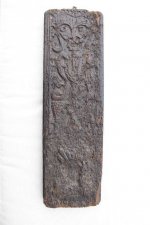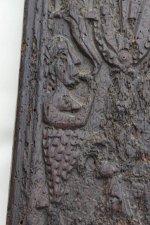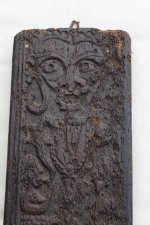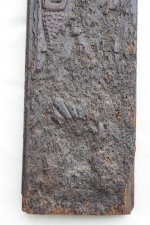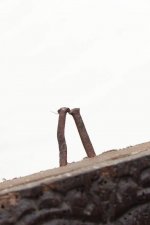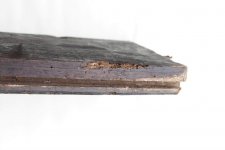garandguy56
Newbie
- Aug 28, 2013
- 4
- 1
- Primary Interest:
- All Treasure Hunting
Hello all!
I picked this up a few years ago and I am completely stumped on what it is!
This is the story I received from the antique dealer: The panel was originally raised from the sea bed in the 1950's from a supposed Medieval shipwreck east of England in the north sea. The panel was soaked in preservation fluid for sometime for protection and was in the possession of the antique dealer for decades. From what he was told, the iron nail type could date the piece anywhere from the 13th to 16th centuries. The piece measures 22.4" x 6.8" x 1.7"
Please let me know your thoughts on the piece including originality, possible age and culture it could have come from. I greatly appreciate any assistance you would be able to lend me.
I picked this up a few years ago and I am completely stumped on what it is!
This is the story I received from the antique dealer: The panel was originally raised from the sea bed in the 1950's from a supposed Medieval shipwreck east of England in the north sea. The panel was soaked in preservation fluid for sometime for protection and was in the possession of the antique dealer for decades. From what he was told, the iron nail type could date the piece anywhere from the 13th to 16th centuries. The piece measures 22.4" x 6.8" x 1.7"
Please let me know your thoughts on the piece including originality, possible age and culture it could have come from. I greatly appreciate any assistance you would be able to lend me.


